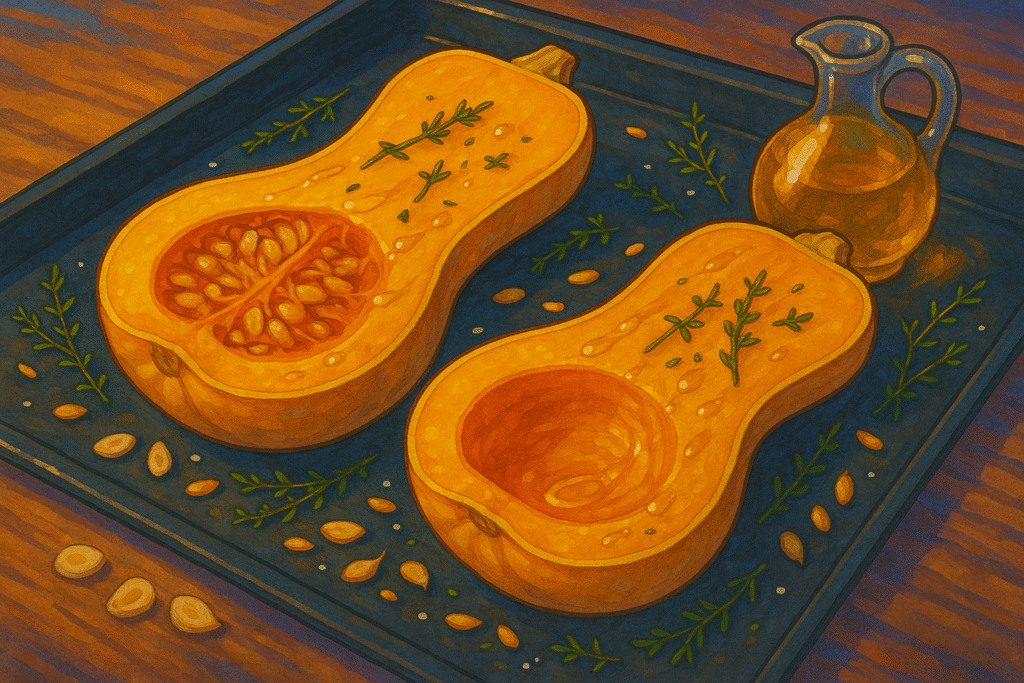Butternut Squash (Cucurbita moschata)

About Butternut Squash
Butternut squash is a smooth-skinned, orange-fleshed winter squash with a rich, nutty-sweet flavor. It’s a go-to for roasting, soups, risottos, and even desserts thanks to its creamy texture and caramel-ready sugars.
Its hourglass shape and small seed cavity make it easy to prep and perfect for small-batch cooking or purees.
The History of Butternut Squash
Squashes were first domesticated over 8,000 years ago in Central and South America. Butternut squash itself is a modern cultivar, bred in the 1940s in Massachusetts to improve upon traditional Cucurbita moschata varieties.
It quickly became a favorite for its storage life, manageable size, and rich flavor — now a staple in autumnal and holiday cooking across North America, Europe, and Australia.
The Science of Butternut Squash
Its orange color comes from beta-carotene, a precursor to vitamin A. As a winter squash, it develops sweetness over time as its starches convert to sugars during curing after harvest.
It’s rich in fiber, potassium, and vitamin C, with a texture that softens into velvet when roasted or simmered.
The Geography of Butternut Squash
It grows best in warm climates with full sun and long seasons. Commonly cultivated in the U.S., Mexico, South Africa, Australia, and parts of Europe.
Unlike summer squashes, it’s harvested mature and stored — allowing it to sweeten and develop deeper flavor over time.
Varieties of Butternut Squash
Waltham
The classic heirloom variety — sweet, dense, and dependable. Excellent for roasting and soups.
Honeybaby
A small, compact hybrid with extra sweetness and thin, edible skin. Perfect for roasting whole or halved.
Tahitian Butternut
Long-necked with more flesh and subtle fruity notes. Used in both savory and sweet dishes.
Ponca
Early maturing and high-yielding with a bright orange interior and creamy texture.
Butterbush
Bush-type plant ideal for small gardens. Smaller fruits with concentrated sweetness.
FAQs All your questions about Butternut Squash: answered
Do you have to peel butternut squash?
The skin is technically edible when roasted, but most people peel it for a smoother texture.
What’s the best way to cook it?
Roasting brings out the best flavor, but it’s also great steamed, mashed, or pureed into soups.
How long does it store?
Whole squash can last up to 3 months in a cool, dry place. Cut squash should be refrigerated and used within a week.
Can you eat butternut squash seeds?
Yes! Clean, roast, and season them like pumpkin seeds — they’re nutty and crunchy.